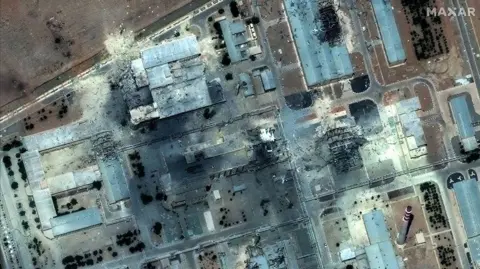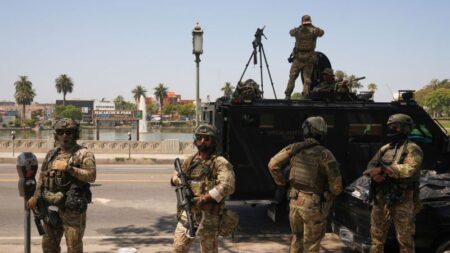In recent developments, a senior Israeli official has claimed that Iran might be able to recover some enriched uranium from one of the facilities targeted by US strikes last month. This assertion has raised concerns regarding Iran’s nuclear capabilities and the regional balance of power. The official, who spoke anonymously to US reporters, indicated that extracting the uranium from the Isfahan facility would be an arduous task; any attempts to do so could provoke further military actions from Israel.
On June 22, during an operation dubbed “Operation Midnight Hammer,” US forces bombarded three Iranian nuclear sites, including Isfahan, using airstrikes and missiles. Following these strikes, former President Donald Trump expressed strong sentiments, stating that the operations had “obliterated” Iran’s nuclear facilities. This narrative, however, is met with skepticism by some US intelligence agencies, which provide a more nuanced assessment of the damage inflicted upon the facilities.
Iran has consistently maintained that its nuclear program is intended solely for peaceful purposes and has denied accusations of pursuing nuclear weapons. The Israeli official’s statements come amid heightened geopolitical tensions and efforts by nations to assert their position regarding nuclear proliferation. The belief that Iran may possess a significant stockpile of enriched uranium at Isfahan stems from Israeli intelligence assessments, which suggest that much of this material could be buried beneath the remnants of the facility that was attacked.
Despite the official’s acknowledgment of Iran’s potential to recover uranium, he expressed confidence that any such attempts would likely be detected by international monitoring regimes. This optimism underscores Israel’s view of the effectiveness of its intelligence capabilities and its readiness to act against perceived threats. According to the officials, Israel calculates that the Iranian nuclear program has been delayed by approximately two years as a result of the strikes—a sizeable setback in the context of ongoing tensions surrounding Iran’s potential nuclear ambitions.
Moreover, various U.S. officials, including Trump and key members of his cabinet, have adamantly claimed the comprehensive destruction of Iran’s nuclear assets. White House spokeswoman Anna Kelly echoed these sentiments, portraying the military actions as a decisive and successful operation that contributes to global safety. Nevertheless, more measured insights from U.S. intelligence sources reveal that, while significant damage was inflicted on Iranian facilities like Fordo, Natanz, and Isfahan, the sites were not entirely eradicated.
John Ratcliffe, the Director of the CIA, conveyed to lawmakers that the U.S. strike effectively crippled Iran’s ability to produce metallic uranium, a critical component in nuclear weapon development. However, Rafael Grossi, head of the International Atomic Energy Agency (IAEA), pointed out that while crucial damage was dealt to the sites, portions of these facilities remain intact. This discrepancy leads to a complex narrative where both near-total destruction and limited operational capacity of the sites co-exist.
Iran’s government, particularly President Mahmoud Pezeshkian, has also weighed in, stating that the facilities suffered significant damage and access remains restricted for a comprehensive assessment. This claim is part of a broader discourse emphasizing the uncertainty surrounding the remnants of Iran’s once operational nuclear infrastructure.
The situation continues to evolve, with global policymakers keenly observing developments. As military capabilities and geopolitical strategies interplay, the implications for regional stability remain a point of critical focus. Nations, particularly those heavily invested in the Iran nuclear issue, are engaged in a balancing act between deterrence and diplomacy. Meanwhile, ongoing updates from various international bodies, intelligence agencies, and government officials will undoubtedly shape public understanding and responses to these developments in the weeks and months to come. Thus, the dialogue around Iran’s nuclear program is far from over, with many questions still left unanswered regarding the future of regional security and intelligence measures.











